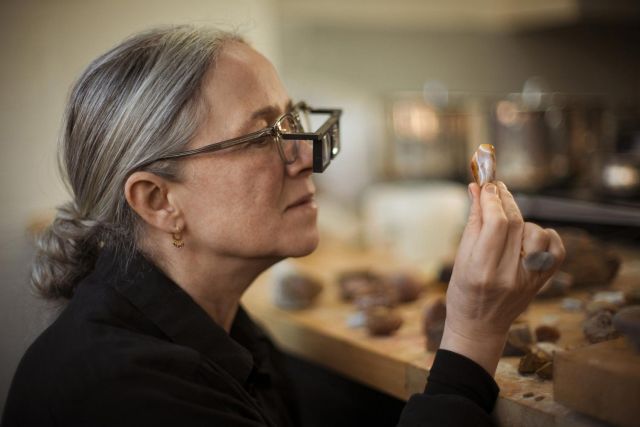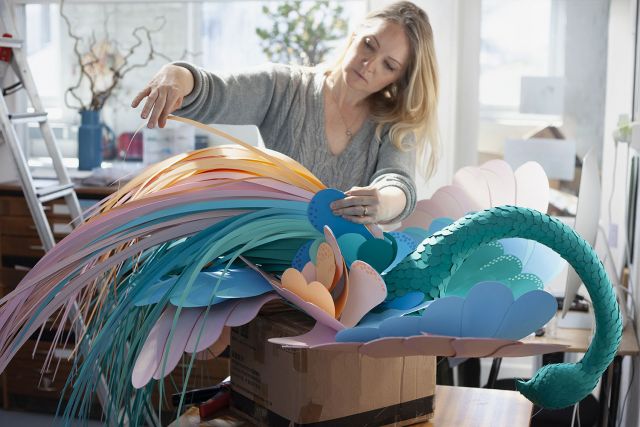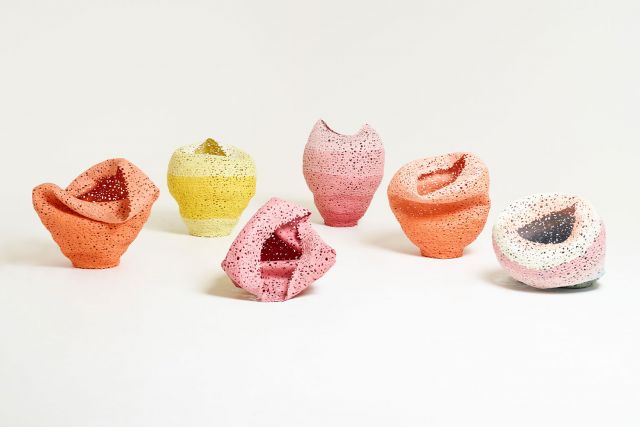This brooch is padded using wool fibres and is embroidered using a range of traditional metal thread embroidery techniques in shades of copper, silver and green. These include couched passings, couched pearl purl, applied metal purls, pleated passings and applied beads and sequins. The design is based on the floral patterns of cut cane Italian Millefiori glass
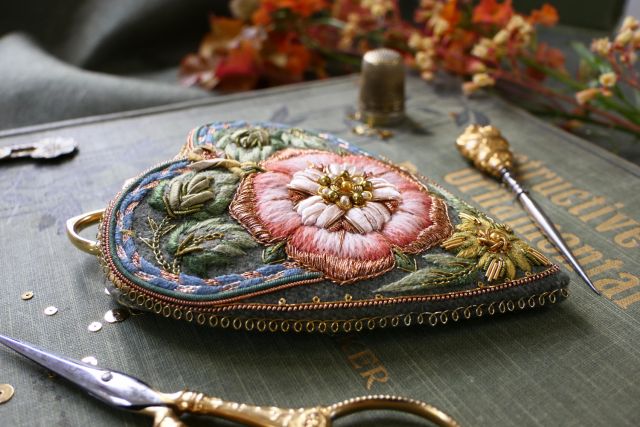
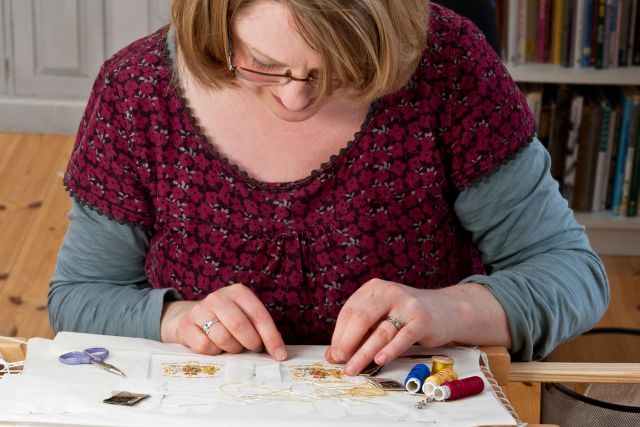
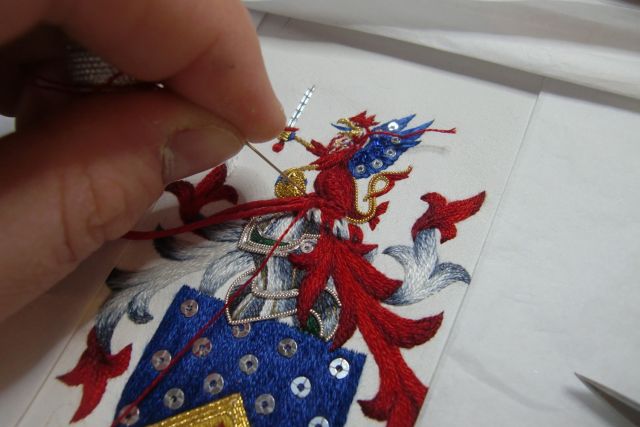
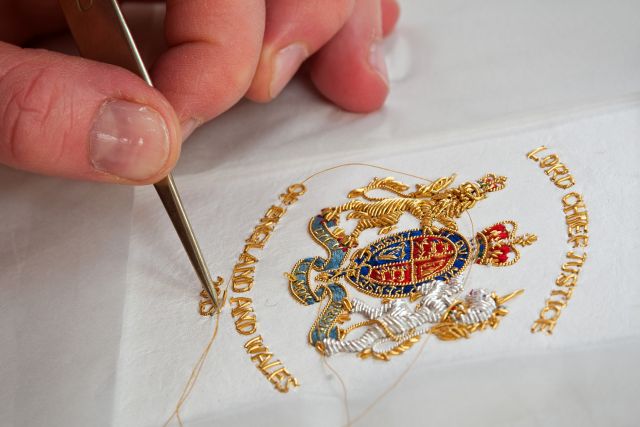
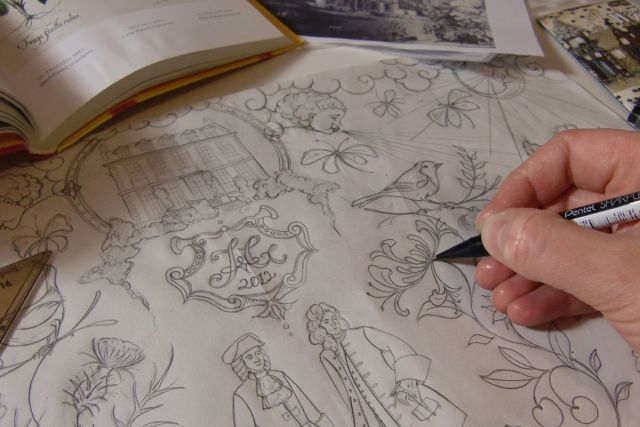
Jenny Adin-Christie
- Embroiderer
- Merstham, United Kingdom
- Master Artisan
Monday to Friday 09:00 - 17:00
+44 7814919498
The dynamic uses of traditional embroidery
- • Jenny's approach combines very traditional craftsmanship with a contemporary focus
- • Graduating from the Royal School of Needlework, she has completed work for high profile occasions
- • She hugely values passing on her manual skills and passion for the craft
Jenny Adin-Christie's mother was a textile teacher at an elementary school and her father a master gunsmith who enjoyed richly detailed embellishments. At 18, Jenny enrolled in the Royal School of Needlework at Hampton Court Palace. At that time, the school ran a three-year apprenticeship, training a small group of embroiderers to an exceptionally high professional standard, that would allow them to work together seamlessly on commissions, incorporating all forms of hand-embroidery. To this day Jenny is called back to this group for major royal occasions such as for the wedding of HRH Princess of Wales and the Coronation of HM King Charles III. She remained at the RSN for a further ten years to teach new generations of apprentices and students. Only after her daughter was born in 2008 did she decide to pursue a career on her own, with a balance between teaching and working as an embroidery artist. Over the years, Jenny's self-employed business has grown into a highly successful off and online operation in which her entire family participates with great passion.
Read the full interviewWorks
Photo: ©All-rights-reserved

Photo: ©All-rights-reserved
The Blue Wren is a needlework etui. Built around a 3D printed body form, with cast bronze legs and beak, it holds a silver thread-waxer, has a thread cutter in its beak and needles can be stored beneath its wings. The body is covered in tiny panels of hand embroidery on wool fabrics, using metal threads, pleated ribbons, sequins and needlelace. The bird rests on a hillock of embroidered velvet.

Photo: ©All-rights-reserved
The owl is a needlework etui, with a 3D printed internal form and bronze legs. The head can be lifted to reveal space to hold a thimble and pin cushion. The chest is worked on linen canvas with silk and metal threads. The head is covered in needlelace using dyed cottons, and the face is shaded using silk gimps. The wings are worked using pleated ribbons, sequins and wool shading.

Photo: ©All-rights-reserved
This is a pair of white children's gloves embroidered with the Coat of Arms of Timothy Hailes, Aldermanic Sheriff of the City of London. The arms are embroidered in traditional shades of blue, red and gold, in fine cotton threads using the technique of needle-painting, further embellished with silver plated and enamelled embroidery threads and silver plated spangles.

Photo: ©All-rights-reserved
This altar front was worked in appliqué with free-machine embroidery and painting and embellished with hand-embroidered details in metal thread work, sequins and crystals. The panels are stretched taut onto wooden panels which sit over the purple draped cloth and are attached to the altar using hidden bolts. The panels are removable, allowing the colour of the cloth behind to be changed with the church seasons.





